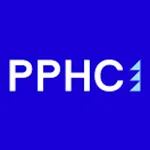This is part 1 of a series of columns on what I think is necessary to prosper financially in the public relations industry.
Rick Gould wrote “The Ultimate PR Agency Financial Management Handbook.” The theme of the book is to understand how to manage by the numbers for breakthrough profitability of 20% or greater.
Can PR firms in today’s business environment achieve “breakthrough profitability? Most PR firms are private companies and do not report their profitability. My impression is that most firms fail the 20% test no matter the size of the agency because of over servicing clients, lack of sound internal controls, lack of a financial vision, and do not manage by the numbers, just to name a few issues.
How do I know this? According to the 2013 Best Practices Report for 2013, all firms participating in the survey had operating profit of less than 20% and six participating firms over $25 million had operating profit of 21.4%. Looking at this statistic by region, no region other than New York and New Jersey had profitability of 20% or more. No sector (specialties) had operating profit of more than 22.7 percent with the average being 18.8 percent. (Operating profit for this purpose is defined as Revenues - fees and rebilled income (mark-up) less general and administrative expenses).
Assuming the benchmarking report is indicative of the industry as a whole, then the numbers do not speak well for an industry/profession that provides a real value added service. Assume an agency has $2.0 million in revenue. Based on the average statistics, operating profit will be $376,000. If taxes are then applied at 40 percent, bottom line profitability is $225,600. Something to write home to mom about! Assume for the moment that most PR agency expenses are fixed, there is little room to maneuver here. Sure, you can cut back on office supplies, advertising, telephone, etc. However, medical insurance costs under Obamacare, insurance, taxes, utilities will probably increase to offset any cost cutting. Therefore, the road to profitability is paved in the revenue earned by the firm.
Economic Outlook
The Congressional Budget Office expects the U.S. economy in 2014 to remain moribund - approaching death - and for unemployment to remain near eight percent. It also projects that both actual and potential real GDP will eke out a 2.25 percent annual gains between 2019 and 2013. For most Americans trying to make ends meet in 2014, a bull market and a recession will probably look - and feel - the same. America’s future economic growth will depend on its ability to innovate, create, and reinvent the way it does business. And it will need to meet the growing evolving untapped demands of an increasingly challenging global environment.
How do you think the economic outlook will impact your agency? If you do not know, you need to start doing some critical thinking.
The first step
To be successful, a firm must have a clear set of objectives. Some call this a “strategic plan.” A strategic plan is a roadmap addressing broad issues of what a company’s management wants it to become and how it is to do business.
There are four variations on the basic idea of business planning. Each serves a different purpose. Large companies tend to all of these different kinds of planning. Smaller companies usually do one plan that combines the features of the four variations.
The four types of planning are (1) strategic planning, (2) operational planning, (3) budgeting, and forecasting. They differ according to three attributes: the length of the planning period, the kind of issues addressed and the level of financial detail.
Strategic planning
Strategic planning is generally a long-term exercise in which executives try to predict in rough terms what the PR agency will do and become over a period of years.
The first step of strategic planning is to question your agency’s very existence. Why is the agency doing what it does? Would it be better off doing something else? What client need does it serve? How? What opportunities are present in the marketplace? What are the threats to achieving its plan?
Strategic planning deals with “words” not “numbers.” The numbers tend to be simple and approximate. For example, an agency might set a goal to be the number 1 or number 2 ranked independent agency in travel PR.
Some PR Agency Results
According to the 2012 O’Dwyer’s Ranking of PR Firms with major U.S. operations, some firms had growth in earnings, some had decline in earnings, and the numbers were all over the lot. What can be said for all of this? Frankly, I am not sure. How much of the revenue growth dropped to the bottom line - operating profit? Has there been an equivalent growth in operating profit to go along with the increased revenue? Unfortunately, the rankings do not tell us this? The best information available is revenue per employee. The Gould survey calls this “Revenue Per Staff.” This is revenue per total number of staff regardless of whether they are account or administrative personnel. The Gould survey came up with $178,659. According to O’Dwyer’s, Edelman revenue per employee for 2012 was $145,175, MWW $207,126, Rudder Finn $115,769, and Qorvis Communications (no net fee increase over 2011) $289,216. So what can be concluded from all of this? Nothing much other than revenue per employee is not the best benchmark for the PR industry.
A better benchmark for the industry is “Revenue Per Professional.” According to the Gould survey, the trend was slightly up for 2012. Last year the average for all firms was $209,539. Firms with net revenues in excess of $25.0 million averaged $230, 990. According to Al Croft, publisher of Management Strategies for Public Relations Firms, revenue per professional approximates $177,000 with almost one-third of his survey respondents reporting income per professional of at least $200,000. In my view, $190,000 is a good benchmark for independent PR agencies to use for the balance of 2013 and 2014.
Next month
My goal is to give you all the tools necessary for breakthrough profitability. For me, a breakthrough is 30 percent or more. I will also give you more from Gould and Croft with my thoughts on what it takes to make it in PR. £


 WPP reported a 5.5 percent decline in Q1 PR revenues to $292M as its BCW and Hill & Knowlton units suffered the loss of Pfizer assignments, and cutbacks in client spending due to the economic uncertainty.
WPP reported a 5.5 percent decline in Q1 PR revenues to $292M as its BCW and Hill & Knowlton units suffered the loss of Pfizer assignments, and cutbacks in client spending due to the economic uncertainty. Interpublic CEO Philippe Krakowsky said the firm is off to a “solid start to the year” as its flat $2.2B net revenues are in line with 2024 financial targets.
Interpublic CEO Philippe Krakowsky said the firm is off to a “solid start to the year” as its flat $2.2B net revenues are in line with 2024 financial targets. Why financial planning always plays a crucial role in every PR firm’s success.
Why financial planning always plays a crucial role in every PR firm’s success. Omnicom CEO John Wren reports Q1 revenues jumped 5.4 percent to $3.6M, powered by a solid 7.0 percent rise in its advertising & media segment.
Omnicom CEO John Wren reports Q1 revenues jumped 5.4 percent to $3.6M, powered by a solid 7.0 percent rise in its advertising & media segment. Public Policy Holding Company registered 24.1 percent growth to a record $135M during the past year, which included the results of the March 1 acquisition of Multistate Assocs.
Public Policy Holding Company registered 24.1 percent growth to a record $135M during the past year, which included the results of the March 1 acquisition of Multistate Assocs.


 Have a comment? Send it to
Have a comment? Send it to 
No comments have been submitted for this story yet.